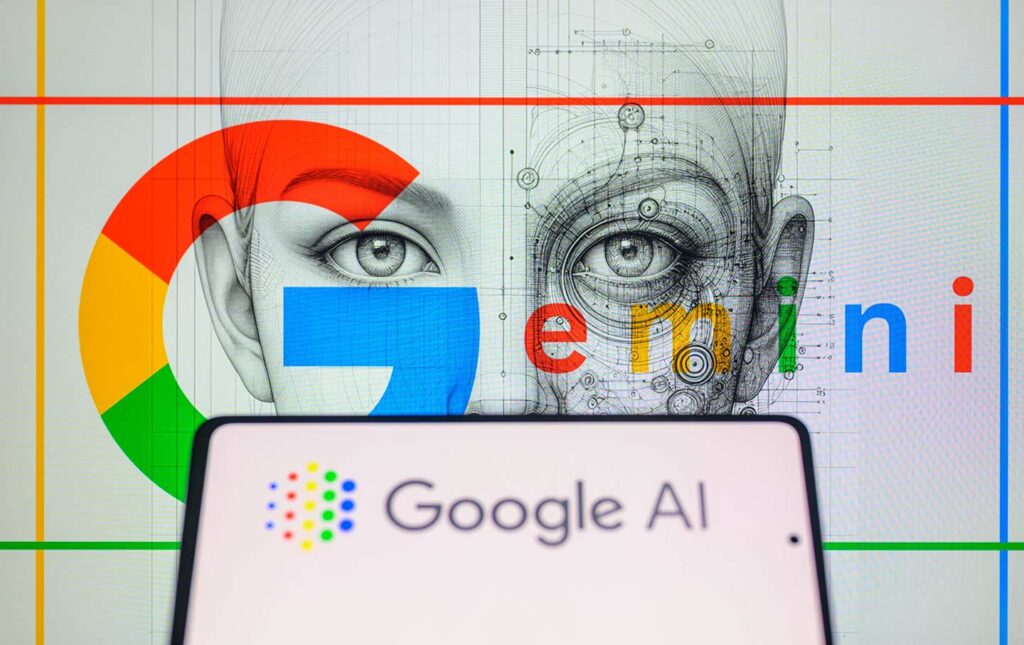The Hidden Struggles of Contractors Behind Google’s AI Innovations
Unveiling the Challenges Faced by AI Contract Workers Amidst Industry Expansion
The Rising Tide of AI Contract Work at Tech Giants
In recent years, the landscape of artificial intelligence development has shifted dramatically, with major corporations like Google heavily relying on a vast network of contract workers to fuel their AI projects. These workers, often employed through third-party firms, are tasked with critical roles such as training, moderating, and refining AI systems. Despite their essential contributions, they frequently operate under conditions that starkly contrast with the perks enjoyed by full-time employees, raising questions about fairness and job security in the tech industry.
From Classroom to Code: A Personal Journey into AI Contracting
Take Ricardo Levario, for example-a former elementary school teacher who transitioned into the tech sector in 2023. After nearly a decade in education, he left his teaching position, seeking new opportunities in technology. His entry point was GlobalLogic, a subcontractor working on Google’s AI initiatives, where he became part of a rapidly expanding team of “large raters.” By mid-2023, GlobalLogic was onboarding up to 20 new workers weekly, reflecting the booming demand for AI training and moderation.
Levario’s initial enthusiasm was fueled by his interest in AI tools like ChatGPT and a desire to contribute to cutting-edge technology. His background in education seemed a natural fit for tasks such as evaluating AI responses or creating detailed instructions for AI systems. However, beneath this promising start lay a series of systemic issues that would soon overshadow his optimism.
The Reality of Contract Work in AI Development
Despite the vital role these workers play, their employment conditions often lack the benefits and stability associated with traditional employment. Levario, for instance, was classified as a non-permanent worker, which meant he was ineligible for paid leave or vacation time. Although he received a modest promotion, most of his colleagues did not, and subcontractors earned roughly two-thirds of the wages of direct employees after deductions.
The situation worsened in early 2025, when hundreds of workers faced layoffs, highlighting the precarious nature of contract employment. These workers, tasked with supporting Google’s AI systems-particularly the Gemini project, Google’s AI assistant-are integral to the development process but are often denied the perks that foster workplace loyalty and morale.
The Disparity Between Contract and Full-Time Google Employees
GlobalLogic, a subsidiary of Hitachi, employs approximately 1,400 raters under a contractual agreement with Google. These workers are responsible for tasks such as moderating content to prevent hate speech, violent content, and child exploitation-work that can be psychologically taxing. Unlike Google’s full-time staff, contractors do not enjoy benefits like free meals, recreational facilities, or other workplace amenities. Instead, they often work in environments that feel more like gig work than traditional employment.
According to Shannon Wait, an organizer with the Alphabet Workers Union, these contractors are essentially treated as disposable labor, despite their critical contributions. Since 2018, the majority of Google’s workforce has been composed of such contractors, working under unstable conditions that hinder collective action and solidarity.
The Fight for Fair Compensation and Job Security
Levario emerged as a prominent union advocate among these workers, but his efforts faced significant resistance. In February, he was dismissed amid escalating tensions over unionization efforts. Despite filing complaints with the National Labor Relations Board (NLRB), legal recourse has been limited due to political interference and a weakened regulatory environment.
In April, GlobalLogic workers issued a collective demand for improved wages and job security. Rachael Sawyer, another contractor involved in content moderation, highlighted the emotional toll of her work, which includes reviewing violent and sexual abuse content involving children. She recounted how the work has been linked to PTSD, yet the company’s response has been minimal.
The Broader Context of AI Workforce Exploitation
This pattern of exploitation is not unique to Google. Investigations by outlets like Time have revealed that AI moderation work worldwide often involves underpaid labor in developing countries. For example, Kenyan contractors have been paid less than $2 per hour to identify abusive content, with many losing their jobs after attempting to organize or demand better conditions. Similar issues are prevalent across the industry, with workers in countries like India, the Philippines, and others facing comparable challenges.
In the United States, wages for AI raters are somewhat higher-starting at around $16 per hour, with some earning over $20-yet these figures still fall short of the skills required and the standards expected of American workers with advanced degrees. The work itself can be psychologically damaging, with some workers acknowledging that their tasks involve reviewing disturbing content that can cause lasting trauma.
The Power Dynamics and Legal Barriers
The legal landscape complicates efforts to improve conditions. Recent decisions by the NLRB have cast doubt on whether Google and its contractors are considered joint employers, affecting workers’ ability to unionize and negotiate collectively. The absence of a functioning NLRB, due to political appointments and court rulings, hampers workers’ capacity to seek legal protections.
Furthermore, Google’s contractual arrangements often serve as a union-busting strategy, making it difficult for workers to organize or advocate for better conditions. Restrictions on social media use and internal communication further suppress collective action, creating an environment of silence and fear.
The Future of AI Workforce Rights
As AI development accelerates, the reliance on contract labor is likely to grow, raising urgent questions about workers’ rights and corporate accountability. The industry’s current model-characterized by low wages, job insecurity, and limited legal protections-mirrors a broader trend of gig and contract work that undermines traditional employment standards.
The ongoing layoffs and legal battles underscore the fragility of this workforce. Without meaningful reforms, these workers will continue to face exploitation, despite their indispensable role in shaping the future of artificial intelligence.
Author: Emmet Fraizer
Emmet Fraizer is a Brooklyn-based writer and fact-checker dedicated to uncovering the realities behind technological progress and labor rights.

